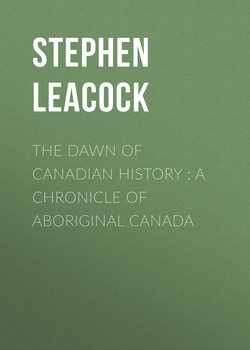Читать книгу The Dawn of Canadian History : A Chronicle of Aboriginal Canada - Стивен Ликок, Stephen Leacock, Стивен Батлер - Страница 3
CHAPTER III
THE ABORIGINES OF CANADA
ОглавлениеOf the uncounted centuries of the history of the red man in America before the coming of the Europeans we know very little indeed. Very few of the tribes possessed even a primitive art of writing. It is true that the Aztecs of Mexico, and the ancient Toltecs who preceded them, understood how to write in pictures, and that, by this means, they preserved some record of their rulers and of the great events of their past. The same is true of the Mayas of Central America, whose ruined temples are still to be traced in the tangled forests of Yucatan and Guatemala. The ancient Peruvians also had a system, not exactly of writing, but of record by means of QUIPUS or twisted woollen cords of different colours: it is through such records that we have some knowledge of Peruvian history during about a hundred years before the coming of the Spaniards, and some traditions reaching still further back. But nowhere was the art of writing sufficiently developed in America to give us a real history of the thoughts and deeds of its people before the arrival of Columbus.
This is especially true of those families of the great red race which inhabited what is now Canada. They spent a primitive existence, living thinly scattered along the sea-coast, and in the forests and open glades of the district of the Great Lakes, or wandering over the prairies of the west. In hardly any case had they any settled abode or fixed dwelling-places. The Iroquois and some Algonquins built Long Houses of wood and made stockade forts of heavy timber. But not even these tribes, who represented the furthest advance towards civilization among the savages of North America, made settlements in the real sense. They knew nothing of the use of the metals. Such poor weapons and tools as they had were made of stone, of wood, and of bone. It is true that ages ago prehistoric men had dug out copper from the mines that lie beside Lake Superior, for the traces of their operations there are still found. But the art of working metals probably progressed but a little way and then was lost,—overwhelmed perhaps in some ancient savage conquest. The Indians found by Cartier and Champlain knew nothing of the melting of metals for the manufacture of tools. Nor had they anything but the most elementary form of agriculture. They planted corn in the openings of the forest, but they did not fell trees to make a clearing or plough the ground. The harvest provided by nature and the products of the chase were their sole sources of supply, and in their search for this food so casually offered they moved to and fro in the depths of the forest or roved endlessly upon the plains. One great advance, and only one, they had been led to make. The waterways of North America are nature's highway through the forest. The bark canoe in which the Indians floated over the surface of the Canadian lakes and rivers is a marvel of construction and wonderfully adapted to its purpose: This was their great invention. In nearly all other respects the Indians of Canada had not emerged even from savagery to that stage half way to civilization which is called barbarism.
